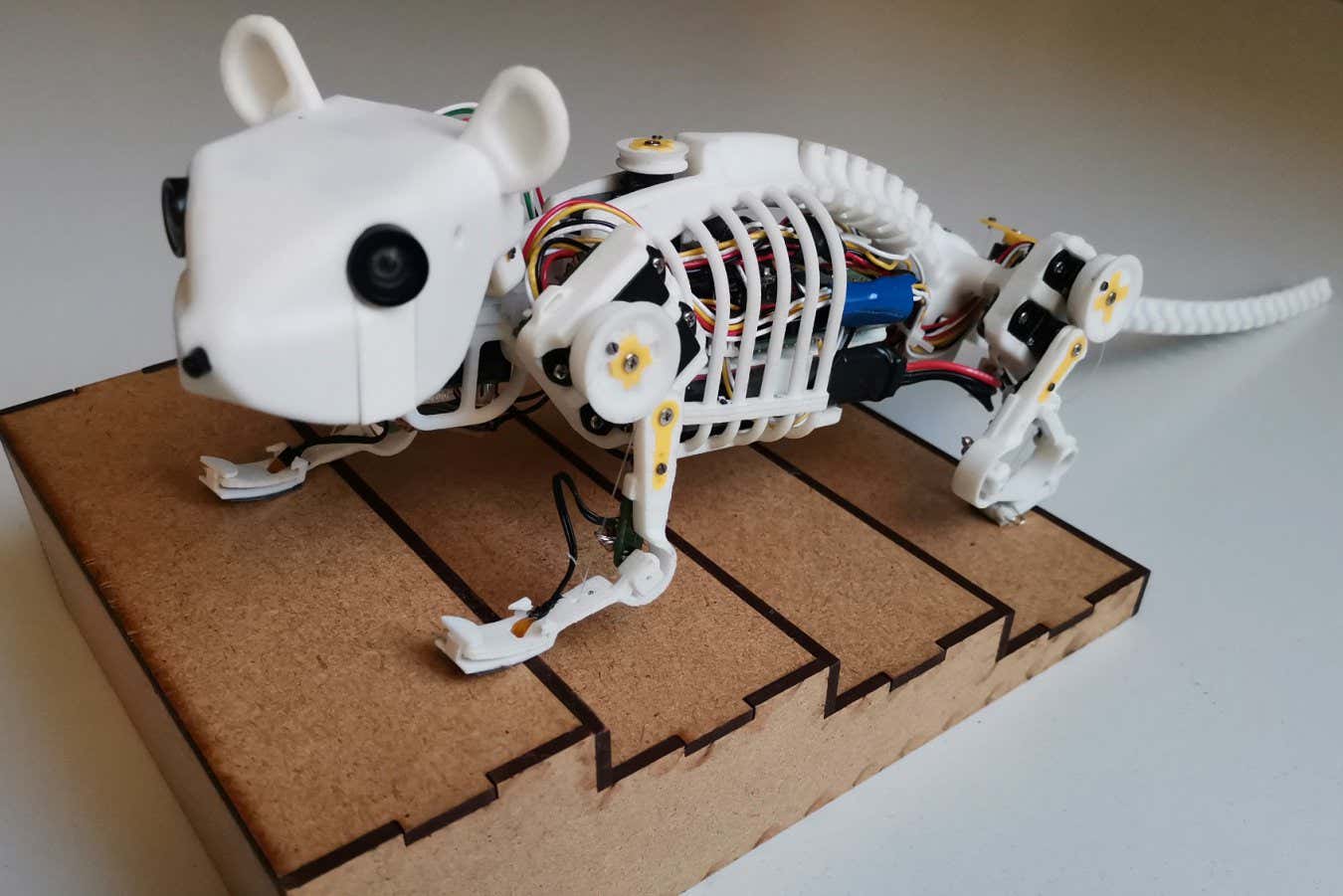Most robots lack a flexible spine, so researchers created a 3D-printed mouse with the ability to bend its back and found that it could move faster
By Matthew Sparkes
6 December 2023
This mouse is able to move with ease
Zhenshan Bing/Technical University of Munich, Germany
A mouse-like robot with an articulated spine is faster, more agile and defter at balancing than rigid competitors, but the added cost and complexity means such devices will only be suitable for some applications.
Read more
Robots with squidgy paws could navigate uneven terrain
Zhenshan Bing at the Technical University of Munich, Germany, and his colleagues created their robot using a 3D printer. Its flexible spine has eight joints controlled by servos, and the whole machine is about 40 centimetres long and weighs 225 grams.
Advertisement
The team put the robot through a variety of tests with its spine rigidly locked, and then again while allowed to use its full range of movement. A balance test that involved lifting each leg in turn tipped the robot over with a rigid spine, but in the flexible test, it was able to change its centre of gravity by bowing its spine and remain upright. The researchers also found that the robot could walk up to 17 per cent faster and turn corners up to 30 per cent more swiftly when the spine was allowed to curve.
Robots such as Boston Dynamics’ dog-like Spot have a rigid spine and yet are still agile enough to carry out a range of tasks, such as inspecting nuclear power plants and working with police. Bing says that for these types of applications, a rigid spine may work well, but that more agility is needed for tasks such as search and rescue where a robot may be required to wiggle and squeeze into tiny, constrained gaps.
